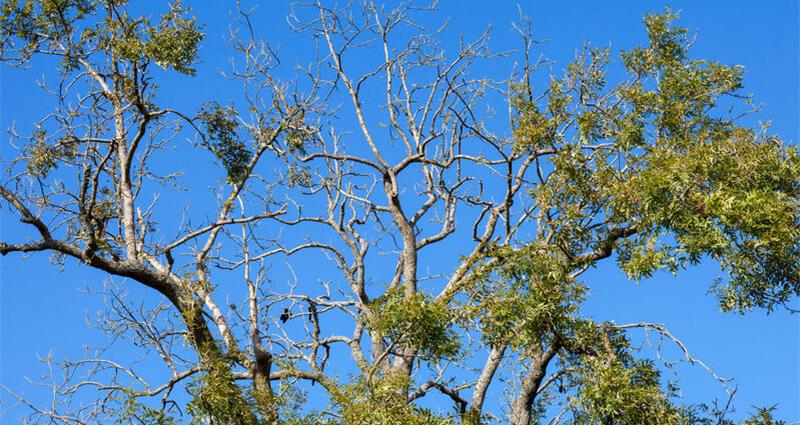We operate tree surgery throughout the North East of England. We have a qualified and experienced management team, together with highly skilled operational Arborists who can deliver a superb service offering excellent value for money.
All our tree works are conducted to completely satisfy the requirements of BS 3998 (2010) and comply with industry best practice and current Arboricultural standards.
ASH DIEBACK
Ash dieback will kill up to 80% of ash trees across the UK. At a cost of billions, the effects will be staggering. It will change the landscape forever and threaten many species which rely on ash.

What does ash dieback look like?
Ash dieback can affect ash trees of all ages. Younger trees succumb to the disease quicker but in general, all affected trees will have these symptoms:
• Leaves develop dark patches in the summer.
• They then wilt and discolour to black. Leaves might shed early.
• Dieback of the shoots and leaves is visible in the summer.
• Lesions develop where branches meet the trunk.
These are often diamond-shaped and dark brown. Inner bark looks brownish-grey under the lesions.
• New growth from previously dormant buds further down the trunk. This is known as epicormic growth and is a common response to stress in trees.
What is ash dieback?
Ash dieback (Hymenoscyphus fraxineus) is a fungus which originated in Asia. It doesn't cause much damage on its native hosts of the Manchurian ash (Fraxinus mandshurica) and the Chinese ash (Fraxinus chinensis) in its native range.
However, its introduction to Europe about 30 years ago has devastated the European ash (Fraxinus excelsior) because our native ash species did not evolve with the fungus and this means it has no natural defence against it.
What happens to the tree?
The fungus overwinters in leaf litter on the ground, particularly on ash leaf stalks. It produces small white fruiting bodies between July and October which release spores into the surrounding atmosphere.
These spores can blow tens of miles away. They land on leaves, stick to and then penetrate into the leaf and beyond. The fungus then grows inside the tree, eventually blocking its water transport systems, causing it to die.
The tree can fight back, but year-on-year infections will eventually kill it.
What to do if you spot ash dieback?
If you are and think you've spotted the signs and symptoms of ash dieback report them to Chris Gill Tree Surgery Ltd, we can arrange a site visit to inspect and advise accordingly.
If you manage a woodland you can find more guidance from the Forestry Commission.
Here at Chris Gill Tree Surgery Ltd we have invested heavily in relevant equipment, machinery & training allowing us to provide advise and planning to remove effected trees in the safest cost affective manor.
Call now for free advice: 07824 667 456












